The Apple iPhone 11, 11 Pro & 11 Pro Max Review: Performance, Battery, & Camera Elevated
by Andrei Frumusanu on October 16, 2019 8:30 AM ESTCamera - Daylight Evaluation: Triple Cameras
Thus far we’ve covered the iPhone 11 series' new A13 SoC, the new display and the phones' excellent battery life. But it’s very evident that above all that, Apple puts the new cameras at the forefront of the new device generation.
The new main camera on the iPhone 11s employ a new generation sensor with full dual-pixel phase-detection autofocus (PDAF) coverage. While the pixels themselves remain the same at 1.4µm in width, Apple will have likely improved the deep trench isolation (DTI) implementation, allowing for the sensor to achieve better detail and less noise.
The wide-angle camera will be the most interesting aspect of the new cameras: the 120° field-of-view of the new module will allow for a completely new perspective on photography for iPhone users, and should be a big new addition to the shooting experience of the phones.
As a note, I had started off the daylight comparison photos on the initial iOS13.0 launch version. By the time I got to the night time shots iOS13.1 was released so those photos were captured on that version. Finally, I added a quick comparison with the newest iOS13.2 and the new Deep Fusion feature towards the end of the daylight pages.
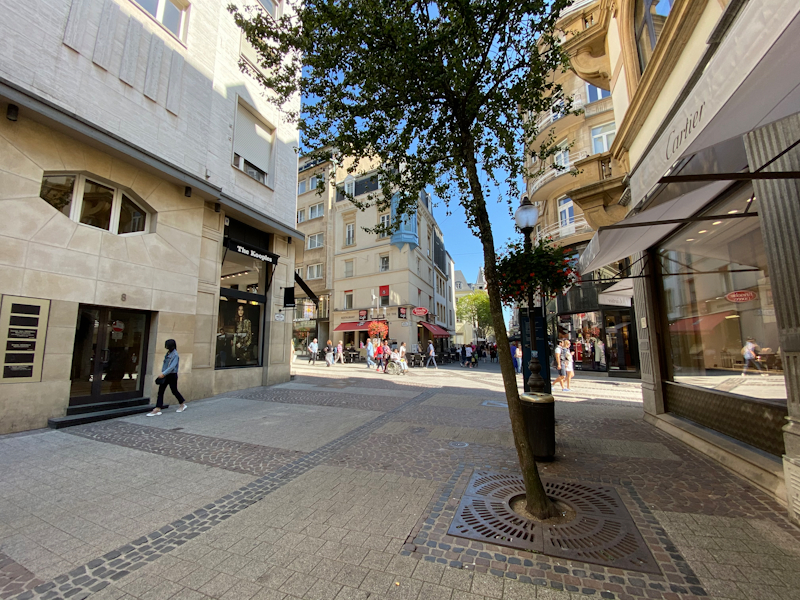
[ iPhone 11Pro ] - [ iPhone XS ] - [ iPhone X ]
[ S10+(S) ] - [ S10+(E) ] - [ Pixel 3 ]
[ P30 Pro ] - [ Xperia 1 ] - [ G8 ]
Starting off with the main camera, we’re seeing a relatively similar exposure between the XS and the 11 in this shot. I feel like the 11’s color reproduction has improved slightly. Another big difference is in the HDR handling as the sunlit areas in the street as well as the top of the building are significantly better defined on the new 11. Detail-wise I can’t say there’s been too much of a change between the two phones in this shot.
On the telephoto camera, which is only available on the Pro models, we’re seeing a slightly brighter picture on the 11. It looks like the 11 has increased noise on the textures here, and we’re seeing a bit less detail in the details further back in the scene.
The wide-angle is a fantastic new addition to the 11 series as it’s able to capture a lot more of the scene in front of you. Apple does very well in terms of maintaining a good consistency between the different cameras and thus exposure and colors are extremely similar.
Comparing the quality of the wide-angle shots to that of other phones however we see that the dynamic range is a bit lacking, and the camera is having trouble in terms of defining the foreground shadows of the trees and the flowers on the lamp-post. The module does well with textures, but is a bit lacking in finer detail.
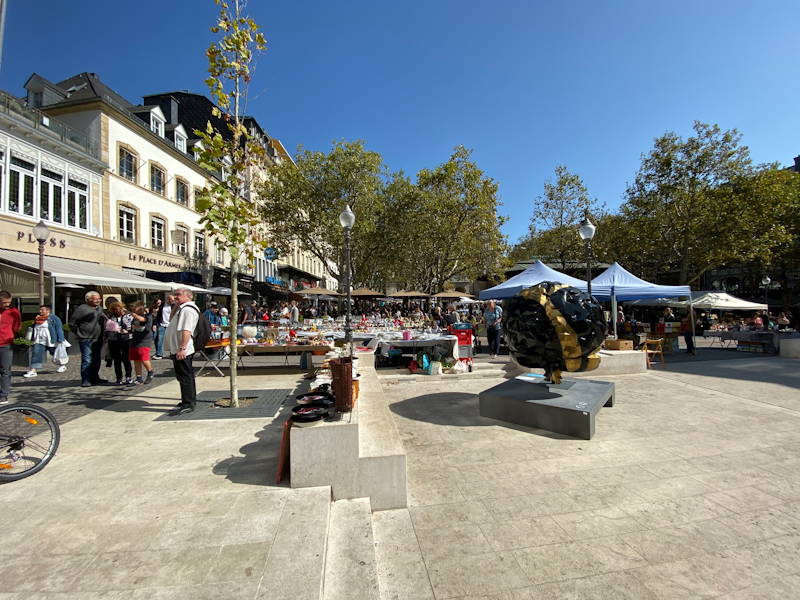
[ iPhone 11 Pro ] - [ iPhone XS ] - [ iPhone X ]
[ S10+(S) ] - [ S10+(E) ] - [ Pixel 3 ]
[ P30 Pro ] - [ Xperia 1 ] - [ G8 ]
In the next shot again, we see very similar exposures between the XS and the new 11. A definitive win for the 11 is the more accurate color temperature, as the XS had the tendency of being a bit warm. It’s very hard to make out any major differences in detail between the phones, but I do notice that the 11 has somewhat less detail in the texture of the ground.
On the zoom lens there’s very little difference again between the phones, however I feel that the 11 has less detail here and it’s as if it’s applying a sharpening filter. The trees particularly look more in focus on the XS – this might be a side-effect of the wider f/2.0 aperture lens on the new 11 module.
The wide-angle here makes it more visible that the color temperature is still a bit warm, as the concrete and stone had a greyer look to them in reality, something more similar to what the S10s are able to produce.

[ iPhone 11 Pro ] - [ iPhone XS ] - [ iPhone X ]
[ S10+(S) ] - [ S10+(E) ] - [ Pixel 3 ]
[ P30 Pro ] - [ Xperia 1 ] - [ G8 ]
On the main camera the improvements on of the HDR can be noticed again here as the 11 is better able to handle the highlights such as the leaves of the trees as well as the white tent – accurately depicting its details while the XS was clipping to white. There’s very little other difference in the details between the shots.
On the telephoto camera, here we’re definitely seeing some much increased noise on the iPhone 11 Pro's module compared to what the XS was able to deliver.
In terms of the wide-angle, I think it’s a matter of preference which phone you like most. What’s important for the iPhone 11 is that the composition between a crop of the wide-angle and the regular main camera looks almost identical and that’s a much appreciated degree of consistency.

[ iPhone 11 Pro ] - [ iPhone XS ] - [ iPhone X ]
[ S10+(S) ] - [ S10+(E) ] - [ Pixel 3 ]
[ P30 Pro ] - [ Xperia 1 ] - [ G8 ]
In this shot the statue in direct sunlight, we see the iPhone 11 Pro is able to resolve more details and remain sharper compared to the XS. This time around, we can also say the same about the telephoto module as the new unit is able to clearly outperform its predecessor.
On the wide-angle, while the iPhone 11 Pro did very well in composition, when we compare the details of the ground against the S10s, we see that it appears very washed out and blurry.
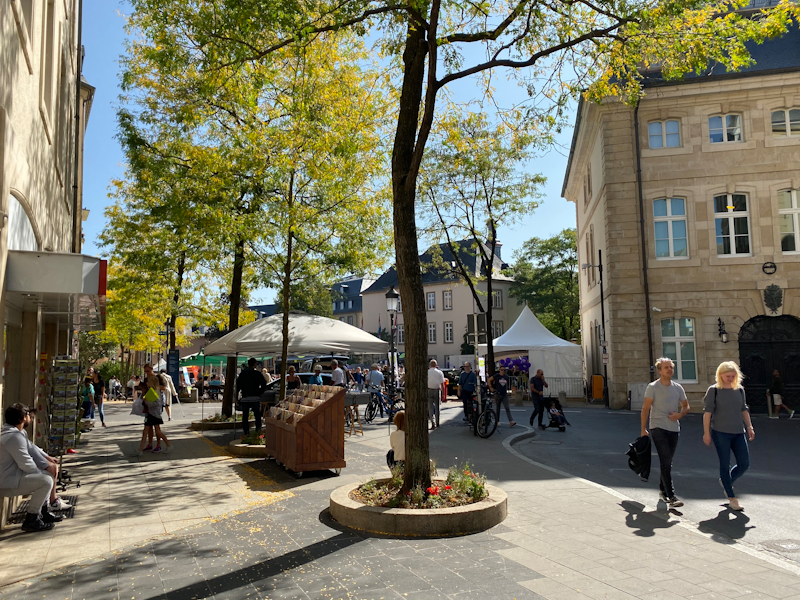
[ iPhone 11 Pro ] - [ iPhone XS ] - [ iPhone X ]
[ S10+(S) ] - [ S10+(E) ] - [ Pixel 3 ]
[ P30 Pro ] - [ Xperia 1 ] - [ G8 ]
In this shot you’d have an extremely hard time telling the iPhone 11 Pro and the iPhone XS apart. The 11 is able to render the tree leaves a little bit livelier, and I can see just a little bit less detail in the pavements, but other than that the shots are almost identical.
The telephoto here again seems to be as finely defined as on the XS – again not sure if this is due to optics or due to processing.
The wide-angle shot is excellent and I think a lot more natural than the Galaxy phones, really only falling second to the P30 Pro’s wide angle unit.
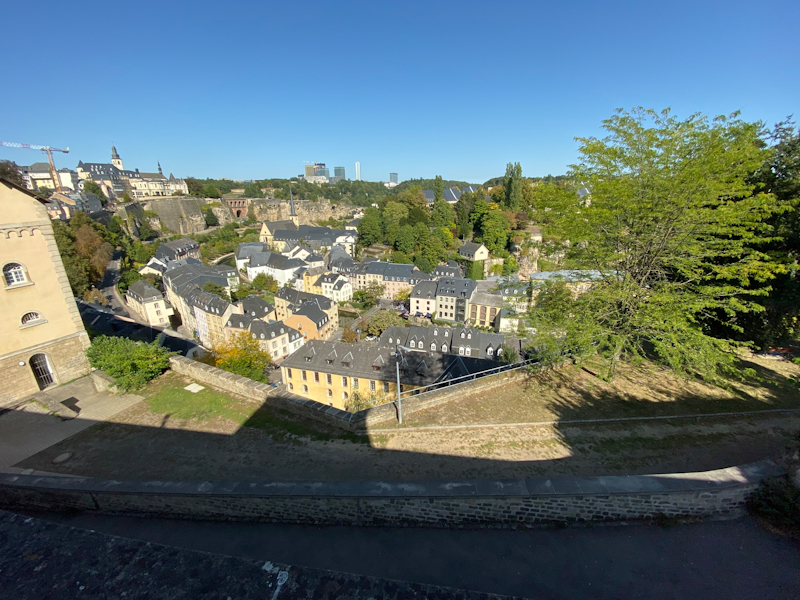
[ iPhone 11 Pro ] - [ iPhone XS ] - [ iPhone X ]
[ S10+(S) ] - [ S10+(E) ] - [ Pixel 3 ]
[ P30 Pro ] - [ Xperia 1 ] - [ G8 ]
The iPhone 11 Pro is able to better extract the saturation of the sunlit foliage in this shot and I think it looks a lot livelier than the XS. Detail between the two generations are even.
In the telephoto modules we see the same saturation change for the better, and this is one instance where the 11 does better in terms of detail as it’s able to have better definition of the roof tiles.
Apple’s wide-angle here is the most natural, even though it’s lacking Samsung’s much wider dynamic range – the latter here went a bit wacko in terms of the luminosity/saturation processing.
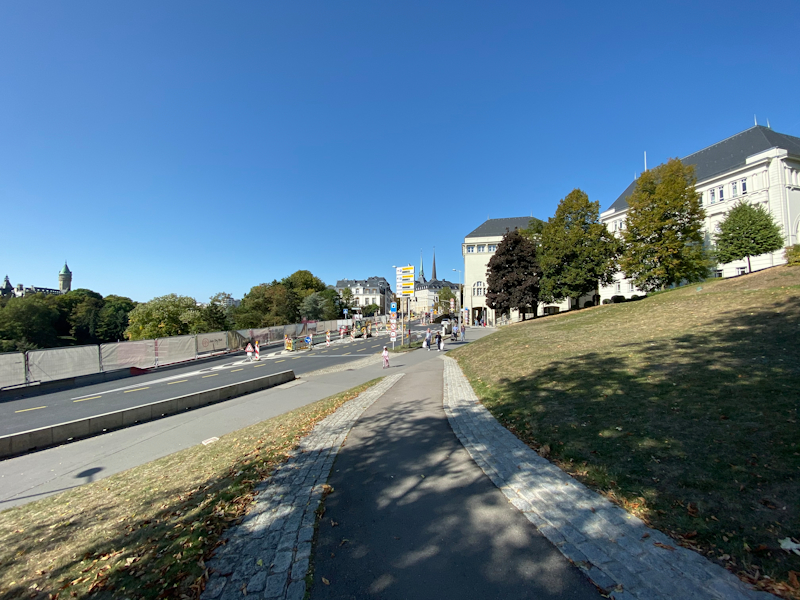
[ iPhone 11 Pro ] - [ iPhone XS ] - [ iPhone X ]
[ S10+(S) ] - [ S10+(E) ] - [ Pixel 3 ]
[ P30 Pro ] - [ Xperia 1 ] - [ G8 ]
Apple’s main improvements here again are color balance and better HDR retaining more details in the highlights of the sun-lit parts.
The telephoto keeps flip-flopping between being an improvement and being a degradation. Here the 11 has again more noise in it and appears less sharp than the XS. Also notice the reds of the traffic signs is a lot more muted on the 11, something also present on the main camera.
Composition of the wide-angle is good although it’s lacking in dynamic range compared to the S10. It’s also noticeably lacking in detail.

[ iPhone 11 Pro ] - [ iPhone XS ] - [ iPhone X ]
[ S10+(S) ] - [ S10+(E) ] - [ Pixel 3 ]
[ P30 Pro ] - [ Xperia 1 ] - [ G8 ]
In the next scene we’re seeing quite a large difference between the 11 Pro and the XS: The 11 is quite a lot brighter but at the same time the sky is also a lot more blown out. The brighter picture does end up more representative of the scene at the time.
On the telephoto the 11 Pro has more contrast, but it’s again noisier. The foreground parts we can see a bit of blur caused by the camera’s shallower depth of field due to the larger aperture.
The wide-angle did very well in terms of exposure here as some phones tended to be too dark.


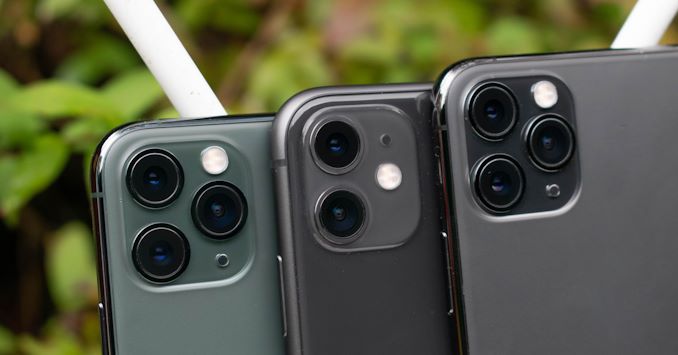








242 Comments
View All Comments
Andrei Frumusanu - Monday, October 21, 2019 - link
Just to add context to the active cooling of the phone rationale;SPEC takes around an hour to complete: you can't expect a phone to sustain that, and we want to be able to see the full peak scores of all the subtests in order to have a proper µarch analysis.
This peak performance still exists in real workloads, however you'd be hard to find a hard use-case which stresses the CPUs for the same amount of time.
WaltFrench - Monday, October 21, 2019 - link
I'd appreciate your expanding on this.Your graph shows watts of power, not watt-hours of energy. If Y performs a test 50% faster than X while using 20% more watts, Y uses about 30% less battery for the same work.
That's certainly not the implication I get from looking at the tests but it seems the obvious conclusion.
WinterCharm - Thursday, October 17, 2019 - link
It's happening at WWDC 2020. Just wait and see.You're wrong and you're stupid to think these chips are not incredibly good.
joms_us - Thursday, October 17, 2019 - link
LOL, if they can make these chips run at 4GHz, then I will believe you they are incredibly good. At best they will probably reach desktop i3 level.Wilco1 - Saturday, October 19, 2019 - link
They already match the fastest 5GHz i9 while running at half the frequency...joms_us - Sunday, October 20, 2019 - link
Match with what, where? Primitive Spec2006 and bloated GB score? LOLApple SoC is skyrocketting in HTML and ML scores yet pathetic in realworld result.
Keep the comparison within the same OS period and then you can say it beat the fastest desktop chip out there otherwise you will look like retarded and brainwashed.
Galdutro@$ - Thursday, June 25, 2020 - link
This didn’t aged very well...rantao333@hotmail.com - Wednesday, October 16, 2019 - link
some users in china found out that Huawei phones have forced the Gpu to render the graphic in lower resolution/ off anti-aliasing, to improve the battery life and FPS, this happened even u have set max details in game setting, of turn off any save battery function. Huawei software kind of override everything and there is no way to turn it off.. Some maps-app and most game has been affected, and this behaviors tend to be trigger by whitelist of huawei . the degradation in details are subtle and most user dint notice it unless u compare it side by side to another phoneI hope AnandTech can investigate this issue in their review of kirin 990 , whether it is true or not, or this had been on going since the introduction of GT- turbo of Huawei.
Anand2019 - Wednesday, October 16, 2019 - link
They have to cheat. Seems like all of the phone manufacturers from asia are cheating. Apples lead is too big!airdrifting - Wednesday, October 16, 2019 - link
Your comment is like all white people are mass murderers and rapers. iPhone is also manufacturered in Asia btw.